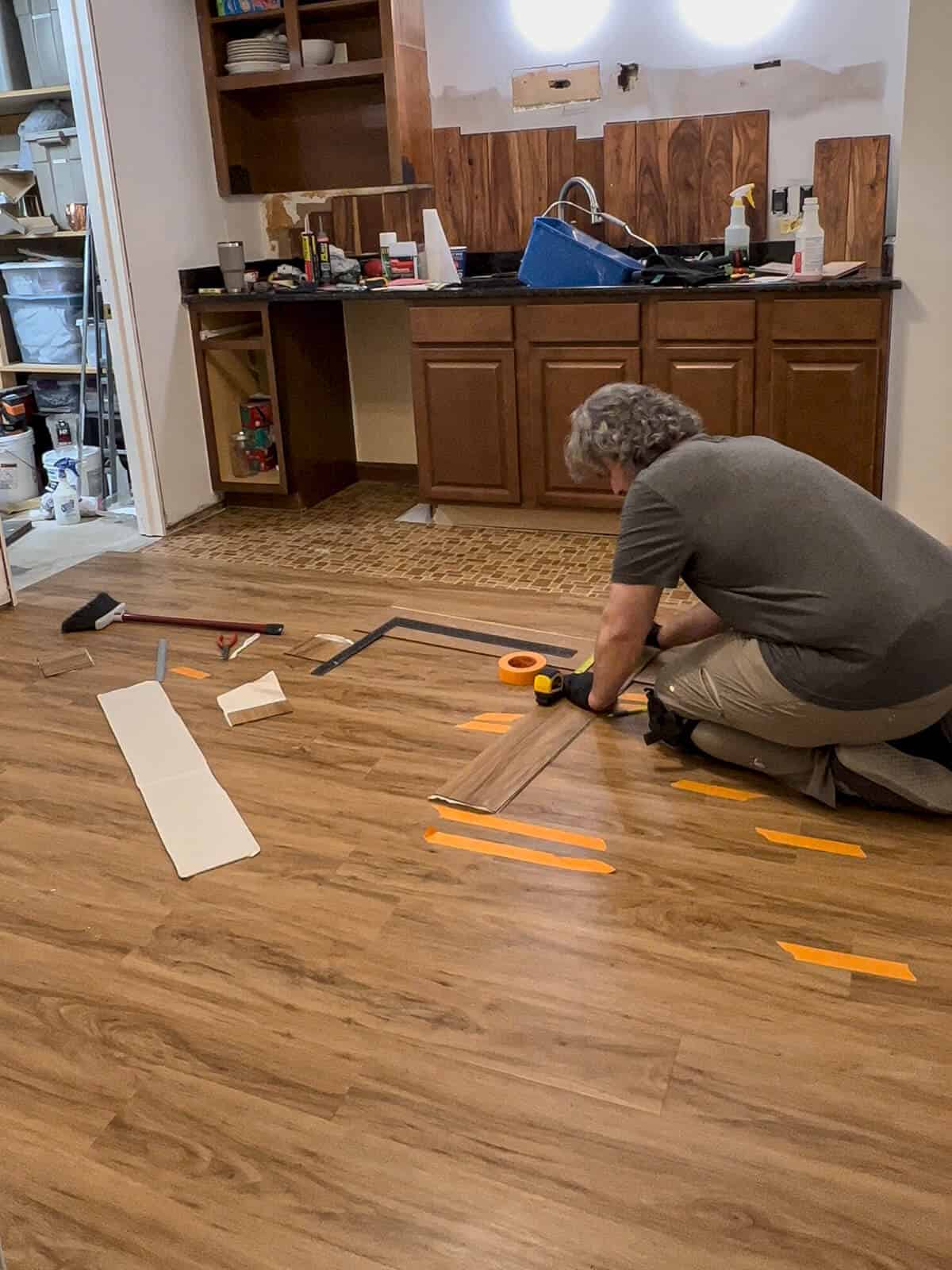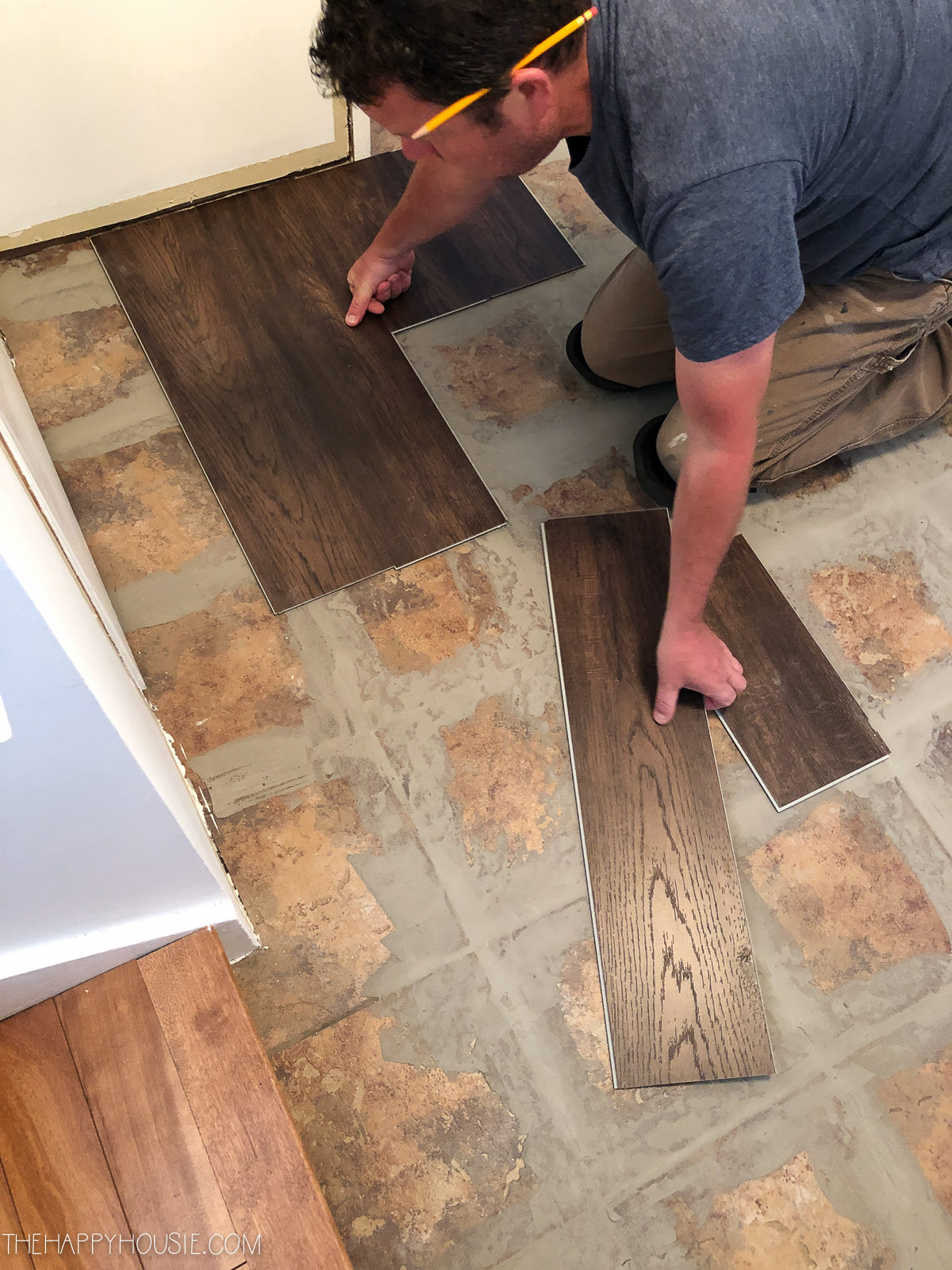Have you ever stared down at your linoleum floors and wished for something a little more vibrant, modern, or perhaps just easier to clean? You’re not alone. Linoleum floors, while durable and classic in their own right, can sometimes feel dated. The good news is, you don’t need to rip them out entirely to achieve a fresh look. Vinyl floor tiles are an excellent option for a quick and cost-effective makeover, but can you directly overlay them onto your existing linoleum? Let’s dive into the details and explore the best approach to achieving your ideal flooring transformation.

Image: mromavolley.com
The allure of vinyl floor tiles lies in their versatility, affordability, and ease of installation. With a wide array of styles, colors, and textures, they offer a way to personalize any space. But before you jump into the project, it’s essential to understand the underlying considerations.
Evaluating the Linoleum Foundation
The success of overlaying vinyl floor tiles onto linoleum depends heavily on the condition of your existing flooring. Here’s a step-by-step assessment:
1. Inspect for Unevenness: Visually examine the linoleum for any bumps, dips, or unevenness. Minor imperfections might be manageable, but significant irregularities can cause problems for the new vinyl tiles. A smooth and even surface will ensure consistent adhesion and a professional-looking outcome.
2. Assess for Damages: Look for cracks, chips, or loose areas in the linoleum. If your existing flooring displays significant damage, it’s crucial to address these issues before proceeding. Repairing the linoleum will create a solid base for the new tiles and a longer-lasting finish.
3. Determine Smoothness: Run your hand over the linoleum surface. Does it feel smooth and consistent? Textured or uneven surfaces can make it challenging to achieve a seamless look with vinyl tiles. Consider sanding or using a leveling compound if needed.
4. Check for Moisture: Linoleum itself is moisture-resistant, but it’s essential to ensure the subfloor beneath is completely dry. Moisture trapped beneath the flooring can cause warping, buckling, and premature deterioration of the vinyl tiles. If you suspect moisture issues, address them before installing the new tiles.
The Pros and Cons of Direct Overlay
Now that you have a grasp of your linoleum’s condition, let’s explore the advantages and disadvantages of directly overlaying vinyl tiles.
Pros:
- Cost-effective: Overlaying is generally a more affordable option than ripping out the existing linoleum, saving you time and money on labor and material costs.
- Time-saving: Installing vinyl tiles over linoleum can be a relatively quick process compared to removing and replacing the existing flooring.
- Minimal disruption: The overlay process minimizes disruption to your home or workspace, making it an appealing choice for busy homeowners or businesses.
Cons:
- Adhesion: Directly overlaying vinyl tiles can be tricky, as the linoleum surface might not always provide optimal adhesion for the tiles. Consider using a high-quality adhesive specifically designed for this application.
- Unevenness: Any existing irregularities in the linoleum surface can transfer to the new vinyl tiles, resulting in an uneven and unprofessional finish.
- Weight: Vinyl tile overlay adds weight to the floor, which might not be suitable in all situations, particularly in older buildings with older subfloors.
Alternatives to Direct Overlay
If the condition of your linoleum or concerns about unevenness are significant, consider these alternatives:
- Linoleum Removal: In cases of extensive damage or unsuitable linoleum, it might be best to remove the existing flooring for a fresh start. This allows for a smooth and even subfloor, ensuring optimal adhesion for the vinyl tiles.
- Self-Leveling Compound: For minor imperfections in the linoleum, consider using a self-leveling compound. This material can smooth out uneven areas and create a more consistent surface for the new tiles.
- Underlayment: Adding a layer of underlayment beneath the vinyl tiles can help bridge gaps, smooth out minor imperfections, and provide additional cushioning.

Image: www.reviewhome.co
Choosing the Right Vinyl Tile Adhesive
The adhesive you choose plays a crucial role in the success of your vinyl tile overlay. Opt for a high-quality adhesive specifically formulated for use over linoleum. Look for adhesives that offer:
- Strong adhesion: Choose an adhesive that provides a robust bond to ensure your vinyl tiles remain firmly attached to the linoleum surface.
- Moisture resistance: The adhesive should be moisture-resistant to prevent future problems from moisture infiltration.
- Long-lasting durability: Select an adhesive that is designed for long-term use, ensuring your new flooring remains in pristine condition for years to come.
Installation Tips for Vinyl Tiles Over Linoleum
Once you’ve evaluated the linoleum and chosen your adhesive, you are ready to install the vinyl tiles. Here are some expert tips for a successful installation:
- Prepare the surface: Thoroughly clean and dry the linoleum surface to ensure optimal adhesion. Remove any residual dirt, grease, or debris that might interfere with the bonding process.
- Measure twice, cut once: Accurately measure your space and cut the vinyl tiles to ensure a precise fit. Take your time making cuts.
- Apply adhesive: Apply a thin, even layer of adhesive to the linoleum surface according to the manufacturer’s instructions.
- Install tiles: Carefully place the tiles on the prepared adhesive, ensuring they are level and aligned. Use a rolling pin or a rubber mallet to firmly press the tiles down and create a secure bond.
- Grout: For a more polished look, consider using grout between the vinyl tiles to fill any gaps and create a unified finish.
- Allow for curing: After installation, allow the adhesive to cure completely according to the manufacturer’s recommendations. This will ensure a strong bond and prevent the tiles from lifting or shifting.
Can You Put Vinyl Floor Tiles Over Linoleum
Conclusion: A Fresh Look for Your Floors
The decision of whether to overlay vinyl floor tiles directly onto linoleum should be based on a thorough assessment of your existing floor’s condition. If your linoleum is in good shape, a direct overlay can be a cost-effective and time-saving solution to update your space. However, if your linoleum has significant damage or unevenness, removing the existing flooring or implementing other alternatives might be a wiser choice. By carefully considering the factors outlined in this guide, you can make an informed decision and achieve the beautiful, functional flooring you desire.






